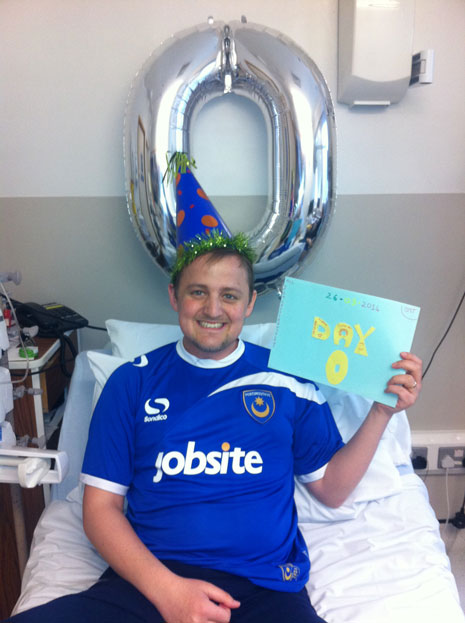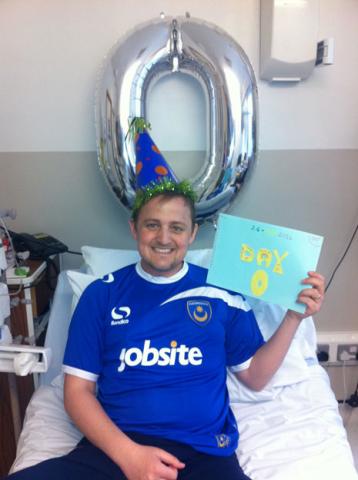George Norton, 32, had a stem cell (or bone marrow) transplant to treat acute lymphoblastic leukaemia in March 2014, and he's been documenting the experience on his blog. Recently, he won the Patient Champion of the Year at the Anthony Nolan Supporter Awards, where this picture of him and his wife Mariacristina was taken.
Here, George tells us about his first six months post transplant. Read more from George on his blog.
As I guzzled my sparkling cordial, readjusted the elastic strap of my party hat and admired my enormous Day Zero balloon, I had absolutely no intention of spoiling the moment of my stem cell transplant with thoughts of what might happen over the following six months. I was enjoying the moment, revelling in the wonderful extra chance afforded to me by my donor, and at that point even six days seemed too many to imagine.
Leukaemia has twice given me a potent reminder that you never know what’s around the next corner, so I was more than happy to take things one day at a time, making the most of being alive.

George on Day Zero of his stem cell transplant
I wasn’t, however, ready to rule out the future. The vague two-year approximation of when I might return to ‘normal’ life was too distant to contemplate, but short-term targets could provide a focus.
Before I knew it, it was Day +10 and the stem cells had engrafted: the transplant was a success, and my enthusiastic new white blood cells could start fighting my worsening mucositis.
In an early reminder of the challenges my immunosuppressed body was set to face, though, I’d been diagnosed with influenza B and dosed up with Tamiflu. But it wasn’t enough to stop me getting home on Day +16. With its soft linen, a distinct lack of bleeping machines and my wife Mariacristina’s fabulous cooking, it felt a thousand miles away from hospital.
On days when my energy levels were up, my illness, treatment and transplant could all have just been a dream. But I was still back in hospital for blood tests twice a week and religiously checking my temperature, for signs of an infection, in the meantime.
Sure enough, the 38° threshold was broken, and before I could reach Day +30, I was re-admitted for several days and plied with antibiotics and steroids.
Soon, a ropey thank-you song to my donor under my belt, I was even ready to contemplate Day +100.
Like London buses, three celebrations suddenly came within a week: birthday lunch in Brussels; a hairy-themed party to mark the post-transplant centenary; and Brighton Pier fish and chips for our wedding anniversary.
It hardly seemed real, but my blood counts were good, my cells 100% donor and my wife persuasive. George on Day Zero
An aggressive attempt to wean me off the immunosuppressant drugs prompted a mild case of graft-versus-host disease, but a second attempt, just over four months post-transplant, was successful.
Suddenly life was no longer about ticking off the next medical milestone. Another bout of flu came, and went. I started – hesitantly – to use public transport again.
My energy levels rose and dipped; I got back on the exercise bike. Even the idea of returning to work began to take definite form after months of hiding in the hazy fog of the future.
One day recently, I noticed the date, and turned to Mariacristina with a tear in my eye. “Do you know where we were six months ago?”
We’re here to help
If you or someone you love is affected by stem cell transplant, please do get in touch with us. Just email patientinfo@anthonynolan.org or call us on 0303 303 0303.
